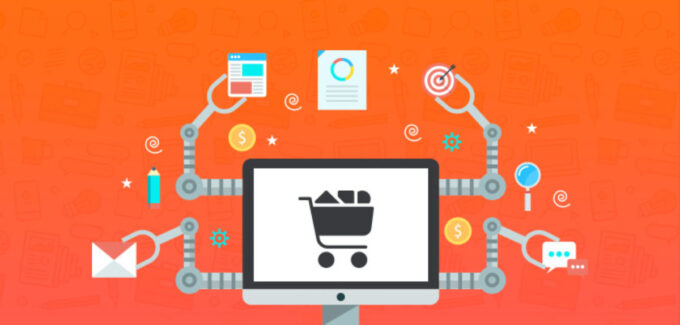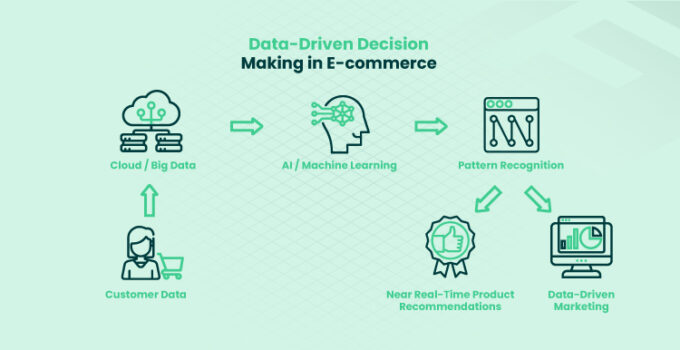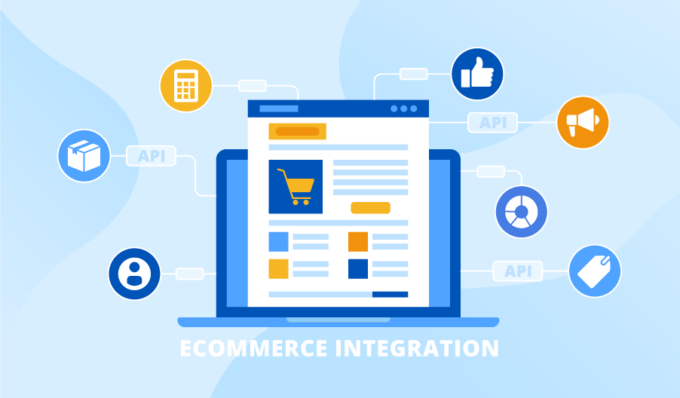The digital world has made buying and selling easier than ever before. With the growth of platforms like Shopify, WooCommerce, and Magento, the eCommerce industry has seen an unprecedented surge in recent years. As more businesses flock to online selling, a glaring reality becomes clear: only those ventures that prioritize efficiency and profitability can truly thrive.
Understanding Automation in eCommerce

At its core, automation means letting software handle repetitive tasks, freeing humans to focus on higher-order responsibilities. In eCommerce, automation becomes the backbone of operations. Picture this: an automated system tracking every product’s inventory, automatically adjusting pricing based on competitors, and even marketing products based on customer behaviors.
For instance, once a customer makes a purchase, an automated system can send a thank-you email, process the payment, update the inventory, and notify the warehouse, all without human intervention. Such streamlined processes not only save time but also minimize errors, boosting profitability in the long run.
Streamlining Inventory Management
Inventory woes are a classic problem in retail, more so in eCommerce where fast-moving trends can lead to stockouts or overstocking. Both scenarios eat into profits. Automating inventory management can track products in real-time, predict demand, and even reorder stock when it falls below a threshold.
Using systems like Odoo, an open-source ERP, eCommerce businesses can smoothly manage their stock levels. Integrate Shopify and Odoo and you’ll get an all-in-one solution for businesses to handle sales, inventory, and customer management seamlessly.
Optimizing Order Fulfillment
Order fulfillment is a cornerstone of eCommerce operations. From that exhilarating moment a customer clicks ‘buy’ to the anticipatory instance the product lands on their doorstep, a symphony of steps unfolds. The modern digital age mandates efficiency, and automation is the conductor directing this intricate performance. These intelligent systems not only auto-generate and print shipping labels but also deftly route orders to the geographically nearest warehouse. Beyond these logistical wonders, they empower customers, offering real-time tracking capabilities. The ultimate payoff? Expedited deliveries, a dramatic reduction in operational errors, and an undeniable surge in customer satisfaction.
Personalized Customer Experiences

Picture the allure of a boutique, every item reflecting your unique style. This dreamy scenario is no longer bound to physical stores. In the vast online marketplace, automation has rendered this personal touch a tangible reality. By meticulously analyzing a blend of user behavior, distinct preferences, and prior purchase history, businesses are now crafting shopping experiences that resonate on a personal level. Such an approach transcends mere sales boosts. It plants the seeds of loyalty, creating an environment where customers genuinely feel their individual tastes are recognized, celebrated, and catered to.
Effective Customer Support Automation
In today’s hyper-connected world, the clock’s ticking is audible. Customers, with a world of options at their fingertips, demand swift, accurate responses. Lapses can tarnish a brand’s image irreparably. Enter chatbots and advanced automated support systems — the tireless digital sentinels addressing queries around the clock. While it’s true that certain intricate issues require the nuanced touch of human agents, a majority of routine questions find resolution within these automated realms. This seamless approach liberates human support staff, granting them the bandwidth to tackle more nuanced, intricate challenges.
Dynamic Pricing Strategies
eCommerce is not for the faint-hearted. In this high-stakes arena, razor-thin margins and fierce competition are the norms. Survival hinges on adaptability, particularly in pricing strategies. Leveraging the prowess of automation, businesses can now remain ever-vigilant. Advanced tools monitor an array of parameters in real-time — from burgeoning demand, fluctuating stock levels, to relentless competitor pricing maneuvers. This constant surveillance enables instantaneous price adjustments. The result? A dual victory: businesses preserve their competitive edge while safeguarding and often enhancing their profit margins.
Data-Driven Decision Making

Data, in the bustling eCommerce marketplace, is akin to the compass of yore — guiding ventures through turbulent waters. But mere possession of vast data oceans doesn’t ensure smooth sailing. Raw data, without insightful analysis, is like an unread map. However, automation, with its advanced analytics capabilities, deciphers these intricate patterns. It provides businesses with precise directions, illuminating paths to best-selling products and revealing the most impactful marketing channels. Decisions, powered by these insights, often spell the difference between a flourishing venture and a sinking ship.
Marketing Automation for Growth
In the sprawling digital bazaar, visibility is paramount. Marketing is that beacon, cutting through the cacophony, drawing customers in. Automation supercharges this beacon. Sophisticated tools dissect customer behavior, enabling razor-sharp email campaign targeting. They tirelessly track potential customers, subtly reminding them of products they’ve once glanced at. And the digital stage of social media? Automation ensures brands shimmer consistently, captivating audiences and bolstering their online presence.
Efficiency in Returns and Refunds
Navigating the treacherous waters of online returns can daunt even seasoned retailers. The intricate dance of processing returns, coupled with customer expectations, can be a whirlwind of chaos. Yet, automation introduces choreography to this dance. Systems swiftly offer customers printable labels, diligently restock returned items, and seamlessly process refunds. The experience metamorphoses from a potential logistical quagmire to a harmonious ballet, enhancing trust and ensuring customer contentment.
Integration of eCommerce Platforms

Imagine a sprawling orchestra, each instrument vital, but true magic emerging when all play in harmony. Similarly, an eCommerce venture boasts numerous tools, each serving a distinct purpose. For the symphony to resonate, these tools must converse, synchronize. Integrations, facilitated by automation, enable this harmonious dialogue. Platforms like Odoo, when seamlessly integrated with giants like Shopify, weave a tapestry where sales data fluidly updates stock levels, ensuring a unified, efficient operation.
Future of eCommerce Automation
The horizon of eCommerce automation gleams with promise. As technology relentlessly marches forward, the tools at our disposal evolve, reaching previously unattainable pinnacles of sophistication. Imbued with artificial intelligence and the nuanced capabilities of machine learning, these systems are on the brink of autonomous decision-making. This future beckons a realm where personalized marketing reaches newfound depths, inventory management acquires unprecedented intelligence, and order processing achieves unparalleled efficiency. This is a vision where businesses, aided by automation, operate with unparalleled precision, speed, and profitability.
In Conclusion
Navigating the vast, ever-shifting sands of eCommerce demands agility, foresight, and an arsenal of advanced tools. Central to this toolkit is automation. Businesses, by wholeheartedly embracing this digital ally, position themselves not merely for survival but for resounding success. In doing so, they unlock unprecedented levels of efficiency and turbocharge their profitability, ensuring they not only survive but thrive in this fiercely competitive domain.









